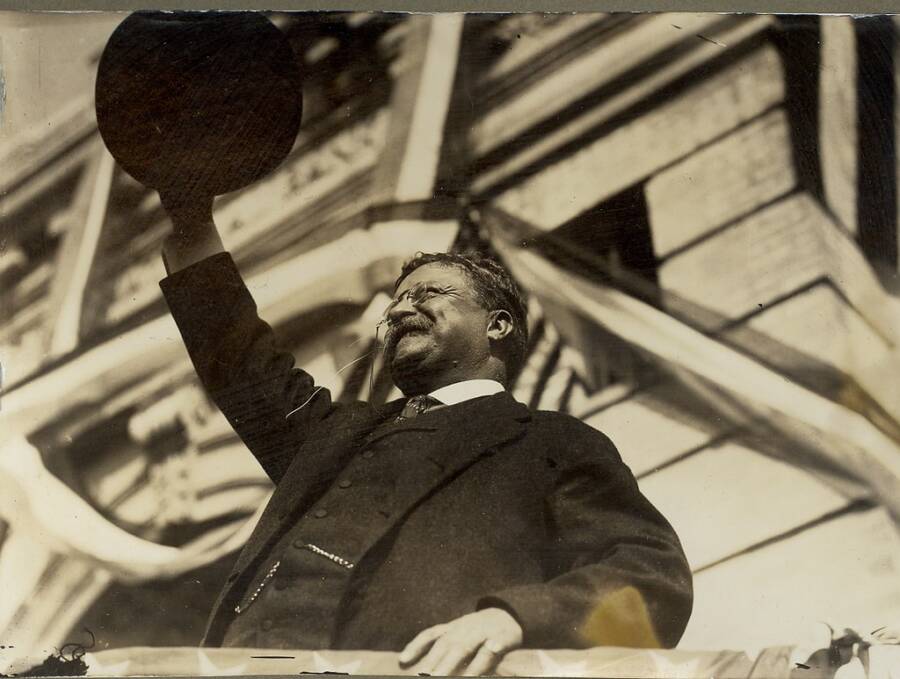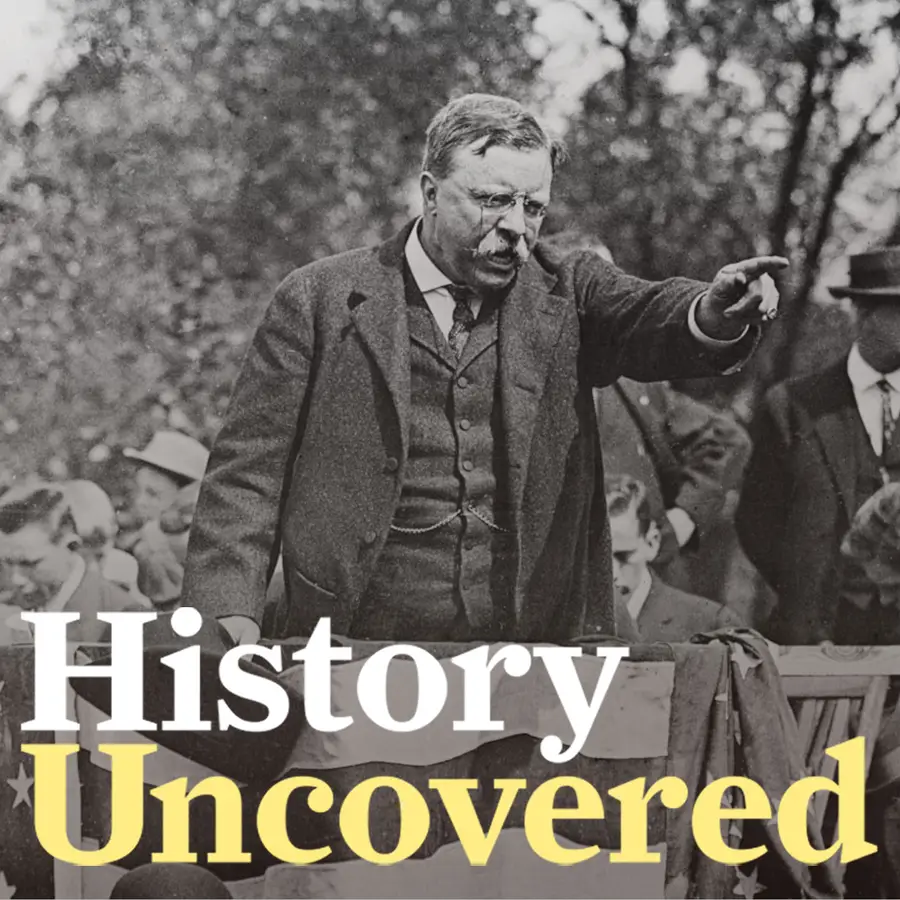On October 14, 1912, John Schrank shot Teddy Roosevelt in the chest, but the former president carried right on with the speech he was preparing to give as if nothing happened.
In September 1901, a man named John Schrank had a troubling dream. In this dream, he saw President William McKinley, who had just been assassinated by Leon Czolgosz, rise up in his coffin. McKinley then pointed his finger across the room at an eerie figure cloaked in the robes of a monk. That figure was none other than Theodore Roosevelt, who had succeeded McKinley and become the youngest president in American history.
“That is my murderer,” McKinley told Schrank. “Avenge my death.”
Almost 11 years later to the day, Schrank had a second dream, one just as chilling as the first. This time, as he sat down to write a poem, McKinley tapped him on the shoulder and said, “Let not a murderer take the presidential chair. Avenge my death.”
Over the next several weeks, Schrank prepared to follow the order he believed he’d been given. Armed with a Colt revolver, he began to stalk Theodore Roosevelt across the country as the former president ran for an unprecedented third term in office.

Houghton Library, Harvard UniversityTheodore Roosevelt campaigning in May 1912, a few months before the attempted assassination.
This was no easy feat. Roosevelt, though no longer the same young man who’d charged up San Juan Hill during the Spanish-American War, remained as zealous as ever. During his campaign, one newspaper approvingly described him as: “an electric battery of inexhaustible energy.”
This forced Schrank to chase Roosevelt from campaign stop to campaign stop. Roosevelt, though a Republican, had formed his own third party — the Progressive Party, or the Bull Moose party — and was facing down his former protege, the incumbent president William Howard Taft, as well as the Democratic candidate, Woodrow Wilson. He drew crowds wherever he went, which made it difficult for Schrank to get close enough to kill him.
Undaunted, Schrank followed Roosevelt for 24 full days from New Orleans, Louisiana, to Charleston, South Carolina to Atlanta, Georgia, to Chattanooga, Tennessee, to Evansville Indiana, to Indianapolis, Indiana, and to Chicago, Illinois. But at each stop, Schrank was somehow stymied.
In Chattanooga, Schrank got within 10 feet of the former president but failed to gather his nerves enough to shoot. And in Chicago, Roosevelt left by a different exit than Schrank had anticipated.
But finally, in Milwaukee, Wisconsin, Schrank got his chance. After reading the local papers to see when and where Roosevelt would arrive, Schrank learned that his unwitting prey would get to town at around 5 p.m., and would be staying at the Gilpatrick Hotel.
As he later confessed, Schrank managed to gain a position near the entrance where he “could shoot to kill” when Roosevelt appeared. And when Roosevelt left the hotel at around 8 p.m. on October 14, 1912, to give a speech at the Milwaukee Auditorium, John Schrank was waiting. It quickly became perhaps the strangest assassination attempt against an American president in history.
He fired at close range and hit Roosevelt in the chest — but Roosevelt survived. In fact, he carried right on and delivered his speech as planned. After exposing his bloodied shirt to the audience and explaining what happened, he told the shocked crowd that it took “more than that to kill a bull moose.”
This is the unbelievable story of how Theodore Roosevelt survived an assassination attempt and the many other times Roosevelt cheated death before his eventual demise in 1919.
Learn more about the music used in our podcast. History Uncovered is part of the Airwave Media network. Learn more about your ad choices by visiting megaphone.fm/adchoices.






